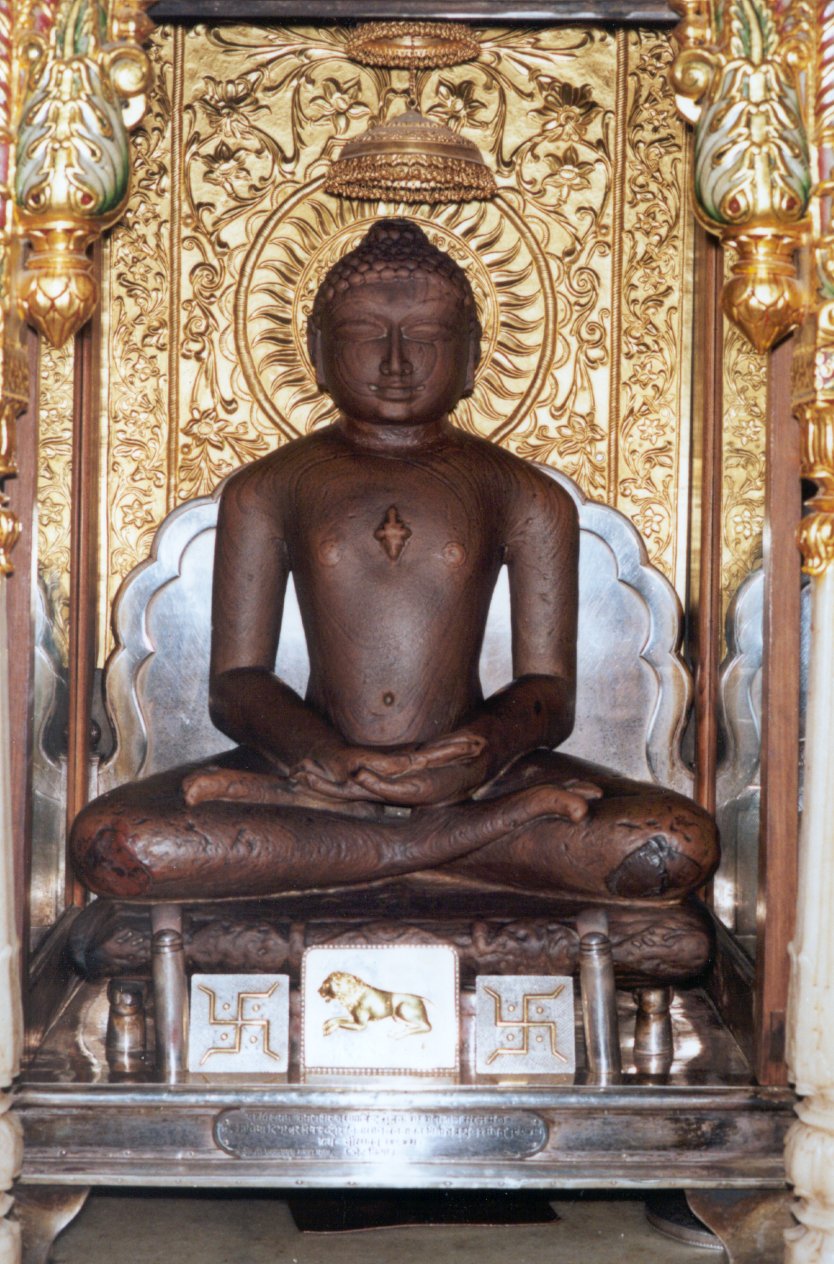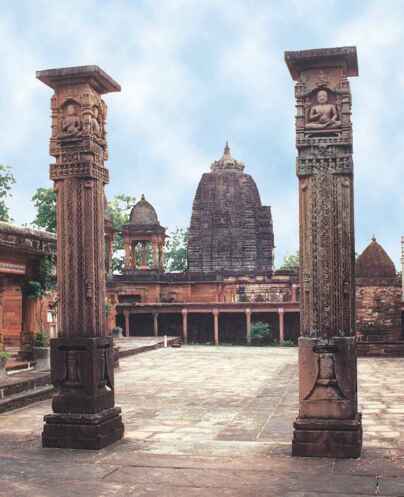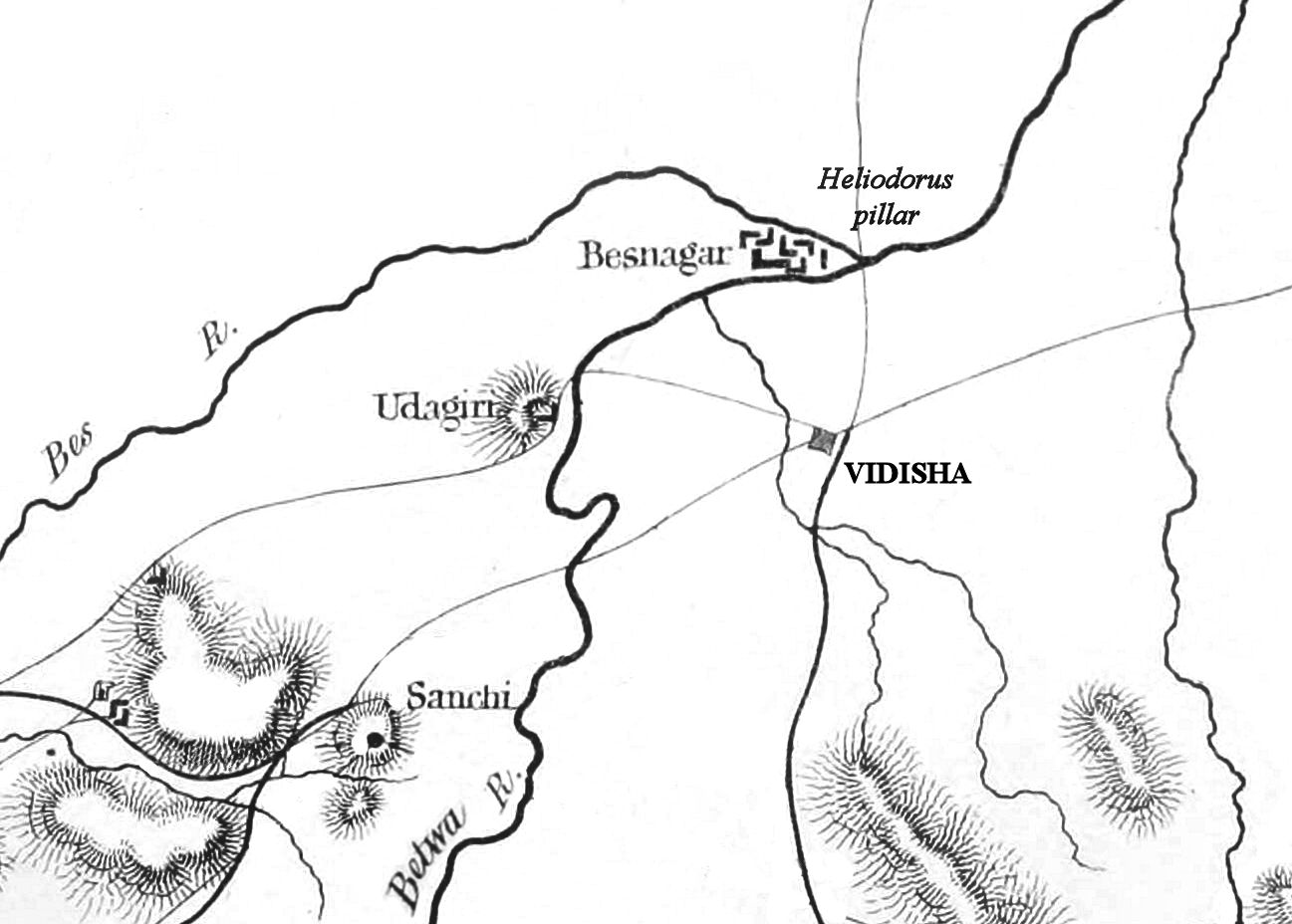|
į¹¢aį¹khaį¹
įøÄgama
The (Prakrit: "Scripture in Six Parts") is the only canonical piece of literature of Digambara sect of Jainism. According to Digambara tradition, the original teachings of lord Mahavira were passed on orally from Ganadhara, Ganadhar, the chief disciple of Mahavira to his disciples and so on as they had the capability of listening and remembering it for always. But as the centuries passed there was downfall in these capabilities and so ÄcÄrya Puį¹£padanta and BhÅ«tabali penned down the teachings of Mahavira in ''į¹¢aį¹khaį¹įøÄgama''. Therefore the ''į¹¢aį¹khaį¹įøÄgama'' is the most revered Digambara text that has been given the status of ''Ägama (Jainism), Ägama''. The importance of the ''į¹¢aį¹khaį¹įøÄgama'' to the Digambaras can be judged by the fact that, the day its ''DhavalÄ'' commentary was completed, it is commemorated on the ''ÅrÅ«ta PaƱcamÄ«'', a day when all the Jain scriptures are venerated. The ''į¹¢aį¹khaį¹įøÄgama'', the first ''Ägama'', i ... [...More Info...] [...Related Items...] OR: [Wikipedia] [Google] [Baidu] |
Jain Texts
Jain literature () refers to the literature of the Jainism, Jain religion. It is a vast and ancient literary tradition, which was initially transmitted orally. The oldest surviving material is contained in the canonical ''Jain Agamas'', which are written in Ardhamagadhi Prakrit, Ardhamagadhi, a Prakrit (Middle Indo-Aryan languages, Middle-Indo Aryan) language. Various commentaries were written on these canonical texts by later Jain monasticism, Jain monks. Later works were also written in other languages, like Sanskrit and Maharashtri Prakrit. Jain literature is primarily divided between the canons of the ''Digambara'' and ''ÅvÄtÄmbara'' orders. These two main sects of Jainism do not always agree on which texts should be considered authoritative. More recent Jain literature has also been written in other languages, like Marathi language, Marathi, Tamil language, Tamil, Rajasthani language, Rajasthani, Dhundari language, Dhundari, Marwari language, Marwari, Hindi language, ... [...More Info...] [...Related Items...] OR: [Wikipedia] [Google] [Baidu] |
Ägama (Jainism)
Jain literature () refers to the literature of the Jain religion. It is a vast and ancient literary tradition, which was initially transmitted orally. The oldest surviving material is contained in the canonical ''Jain Agamas'', which are written in Ardhamagadhi, a Prakrit ( Middle-Indo Aryan) language. Various commentaries were written on these canonical texts by later Jain monks. Later works were also written in other languages, like Sanskrit and Maharashtri Prakrit. Jain literature is primarily divided between the canons of the ''Digambara'' and '' ÅvÄtÄmbara'' orders. These two main sects of Jainism do not always agree on which texts should be considered authoritative. More recent Jain literature has also been written in other languages, like Marathi, Tamil, Rajasthani, Dhundari, Marwari, Hindi, Gujarati, Kannada, Malayalam and more recently in English. Beliefs Jains believe their religion is eternal, and the teachings of the first tÄ«rthaį¹ kara, į¹į¹£abhanÄtha, ... [...More Info...] [...Related Items...] OR: [Wikipedia] [Google] [Baidu] |
Jain Scriptures
Jain literature () refers to the literature of the Jain religion. It is a vast and ancient literary tradition, which was initially transmitted orally. The oldest surviving material is contained in the canonical ''Jain Agamas'', which are written in Ardhamagadhi, a Prakrit ( Middle-Indo Aryan) language. Various commentaries were written on these canonical texts by later Jain monks. Later works were also written in other languages, like Sanskrit and Maharashtri Prakrit. Jain literature is primarily divided between the canons of the ''Digambara'' and '' ÅvÄtÄmbara'' orders. These two main sects of Jainism do not always agree on which texts should be considered authoritative. More recent Jain literature has also been written in other languages, like Marathi, Tamil, Rajasthani, Dhundari, Marwari, Hindi, Gujarati, Kannada, Malayalam and more recently in English. Beliefs Jains believe their religion is eternal, and the teachings of the first tÄ«rthaį¹ kara, į¹į¹£ ... [...More Info...] [...Related Items...] OR: [Wikipedia] [Google] [Baidu] |
Digambara
''Digambara'' (; "sky-clad") is one of the two major Jain schools and branches, schools of Jainism, the other being ''ÅvetÄmbara'' (white-clad). The Sanskrit word ''Digambara'' means "sky-clad", referring to their traditional monastic practice of neither possessing nor wearing any clothes. Nakedness was the ideal practice of lord Mahavira and his immediate followers. Mahavira emphasized the importance of nakedness for monks. It symbolizes complete detachment and is an ideal form of conduct. Mahavira believed that renouncing clothes made the body immune to external influences like heat and cold, increasing resilience. Without clothes, a monk would avoid the distractions of acquiring, maintaining, and washing garments, allowing him to focus on spiritual growth and self-discipline. Digambara and ÅvetÄmbara traditions have had historical differences ranging from their dress code, their temples and iconography, attitude towards female monastics, their legends, and the texts the ... [...More Info...] [...Related Items...] OR: [Wikipedia] [Google] [Baidu] |
Jinasena
Acharya Jinasena II (c. 9th century CE) was a monk and scholar in the ''Digambara'' tradition of Jainism. He was patronized by the Rashtrakuta Emperor Amoghavarsha I. He was the author of ''Adipurana'' and '' Mahapurana''.Early medieval developments (500ā1100) Encyclopaedia Britannica Jinasena II was the disciple of '' Acharya Virasena'' and he completed the commentary '' Dhavala'' on '''', a revered text in ... [...More Info...] [...Related Items...] OR: [Wikipedia] [Google] [Baidu] |
Mahavira
Mahavira (Devanagari: ą¤®ą¤¹ą¤¾ą¤µą„ą¤°, ), also known as Vardhamana (Devanagari: ą¤µą¤°ą„ą¤§ą¤®ą¤¾ą¤Ø, ), was the 24th ''Tirthankara'' (Supreme Preacher and Ford Maker) of Jainism. Although the dates and most historical details of his life are uncertain and varies by sect, historians generally consider that he lived during the 6th or 5th century BCE, reviving and reforming a proto-Jain community (which had possibly been founded by PÄrÅvanÄtha), and that he was an older contemporary of Gautama Buddha. Jains regard him as the spiritual successor of the 23rd ''Tirthankara'' Parshvanatha. According to traditional legends and hagiographies, Mahavira was born in the early 6th century BCE to a royal Kshatriya Jain family of ancient India. His mother's name was Trishala and his father's name was Siddhartha. According to the second chapter of the ÅvÄtÄmbara ÄcÄrÄį¹ ga SÅ«tra, Siddhartha and his family were devotees of Parshvanatha. Mahavira abandoned all worldly p ... [...More Info...] [...Related Items...] OR: [Wikipedia] [Google] [Baidu] |
Parwar (Jain)
Parwar, also spelt as ParavÄra (ą¤Ŗą¤°ą¤µą¤¾ą¤° in Hindi, ą¤Ŗą„ą¤°ą¤Ŗą¤ą„ą¤ in Sanskrit inscriptions), is a major Jain community from the Jainism in Bundelkhand, Bundelkhand region, which is largely in Madhya Pradesh, but also includes the two districts of Lalitpur district, India, Lalitpur and Jhansi district, Jhansi in Uttar Pradesh. Apart from them, Nagpur district (Maharashtra) have also a very large Parwar community. There is an area in Itwari of Nagpur known as Parwar-Pura having large number of Parwar's homes and shops . Most of the Nagpur's Parwar are migrated from Sagar, Deori, and other small villages of Sagar District of MP. Parwar exclusively follow the Digambar Jain tradition. Parwar usually preferred their marriage within community. There are 12 Gotra in Parwar community. Each Gotra has 12 Moor (lineages). A marriage within the same gotra or lineage are not allowed. Traditionally a marriage within any of the 8 branches (the moor of boy or girl, mother's family, ... [...More Info...] [...Related Items...] OR: [Wikipedia] [Google] [Baidu] |
Balachandra Shastri
Pandit Balachandra Siddhanta-Shastri (ą¤Ŗą¤ą¤”ą¤æą¤¤ ą¤¬ą¤¾ą¤²ą¤ą¤ą¤¦ą„ą¤° ą¤øą¤æą¤¦ą„ą¤§ą¤¾ą¤Øą„ą¤¤ą¤¶ą¤¾ą¤øą„ą¤¤ą„ą¤°ą„) was a scholar and linguist who bridged classical and modern scholarship in Jainism during the mid-20th century. Life Born in 1905 at Sonrai, in the district of Sagar in Bundelkhand, Madhya Pradesh, he attended the traditional Jain institution at Sadhumal. He later studied at Kashi Vidyapith. He worked for several Jain institutions in India during his life as a scholar. His efforts resulted in the publication of several major Jain texts. He died in Hyderabad in 1985. Contributions His contributions include * Satkhandagama along with Dhavala: volumes 6ā16, translation.http://www.jainworld.com/JWHindi/Books/shatkhandagama-5/fristpage.pdf SHATKHANDAGAMA OF PUSHPADANTA AND BHOOTABALI WITH THE COMMENTARY DHAVALA OF VEERASENACHARYA * Tiloyapannatti, vol. 1-2, translation. * Padmanandi's Panchvinshati, translation and commentary. * Jain Lakshnavali ... [...More Info...] [...Related Items...] OR: [Wikipedia] [Google] [Baidu] |
Karma In Jainism
Karma is the basic principle within an overarching psycho-cosmology in Jainism. Human moral actions form the basis of the transmigration of the soul ('). The soul is constrained to a cycle of rebirth, trapped within the Temporality, temporal world ('), until it finally achieves liberation ('). Liberation is achieved by following a path of purification. Jains believe that karma is a physical substance that is everywhere in the universe. Karma particles are attracted to the soul by the actions of that soul. Karma particles are attracted when we do, think, or say things, when we kill something, when we lie, when we steal and so on. Karma not only encompasses the causality of transmigration, but is also conceived of as an extremely subtle matter, which infiltrates the soulāobscuring its natural, transparent and pure qualities. Karma is thought of as a kind of pollution, that taints the soul with various colours (''Lesya, leÅyÄ''). Based on its karma, a soul undergoes transmigr ... [...More Info...] [...Related Items...] OR: [Wikipedia] [Google] [Baidu] |
Namokar Mantra
The į¹amÅkÄra mantra is the most significant mantra in Jainism, and one of the oldest mantras in continuous practice. This is the first prayer recited by the Jains while meditating. The mantra is also variously referred to as the ''Pancha NamaskÄra Mantra'', ''NamaskÄra Mantra'', ''NavakÄra Mantra'', ''NamaskÄra Mangala'' or ''Paramesthi Mantra''. It is dedicated to the Panch-Parmeshthi, namely the arihant, the siddhas, the acharyas, the upadhyaya and all the ascetics. History A short inscription (dated 200 BCE to 100 BCE) found in Pale Caves in Maharashtra mentions () or (), only the first line of Namokara Mantra. In Kushana and Shaka periods of 1st century CE to the first quarter of 2nd century, only the first line was prevalent. The Hathigumpha inscription dated between 2nd century BCE to 1st century CE starts with () and (), the first two lines of Namokar Mantra. The rest of the lines are not there. It was inscribed by the Jain monarch Kharavela of Kal ... [...More Info...] [...Related Items...] OR: [Wikipedia] [Google] [Baidu] |
Bharatiya Jnanapitha
Bharatiya Jnanpith a literary and research organization, based in New Delhi, India, was founded on February 18, 1944Encyclopaedia of Indian literature vol. 1, p. 298 1987, Sahitya Akademi, by Sahu Shanti Prasad Jain of the Sahu Jain family and his wife Rama Jain to undertake systematic research and publication of Sanskrit, Prakrit, Pali and Apabhramsha texts and covering subjects like religion, philosophy, logic, ethics, grammar, astrology, poetics, etc.jnanpith.net , Bhartiya Jnanpith Official website Its research and publication programme started with the publication of the texts. A Jain temple at |
Vidisha
Vidisha (ą¤µą¤æą¤¦ą¤æą¤¶ą¤¾, formerly known as Bhelsa and known as Besnagar and Bhaddilpur in ancient times) is a city in Indian state of Madhya Pradesh and the administrative headquarters of Vidisha district. It is located 62.5 km northeast of the state capital, Bhopal. The name "Vidisha" is derived from the nearby river "Bais", mentioned in the Puranas. The district was created as Bhilsa District in 1904 by joining the tehsils of Vidisha (also known as Bhilsa) and Basoda (but not Basoda State) which were then part of Gwalior state. After India's independence in 1947, the former princely state of Gwalior became part of Madhya Bharat state, which was formed in 1948. VidishÄ was the administrative headquarters of Bhelsa, or Bhilsa, during the Medieval period. It was renamed Vidisha in 1956. Vidisha is also amongst the 112 Aspirational District in the Aspirational District Programme launched by NITI Aayog in 2018. Towards the seventh or eighth century, Bhadravati was ra ... [...More Info...] [...Related Items...] OR: [Wikipedia] [Google] [Baidu] |







